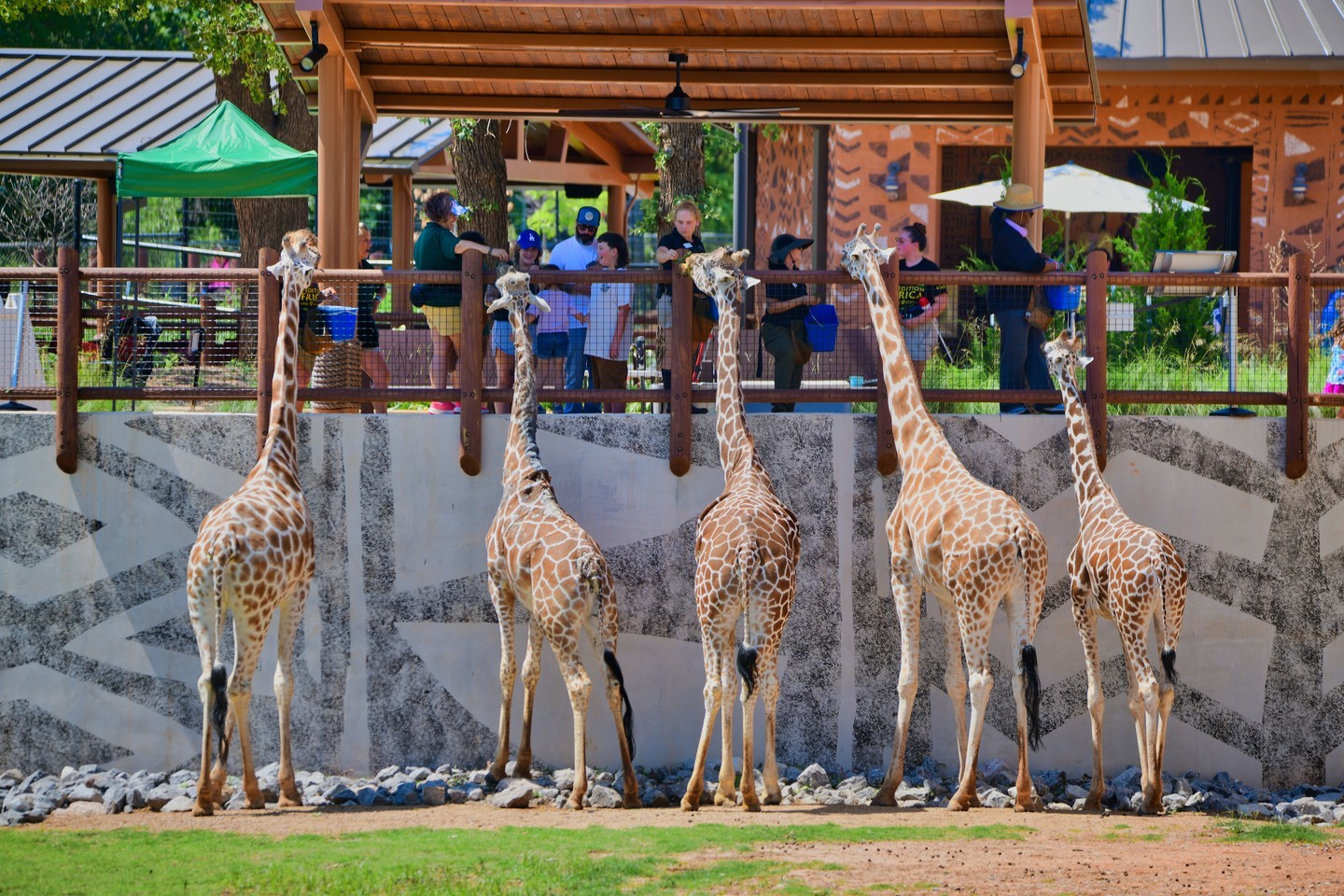- The significance of the new temperature-controlled Giraffe House for year-round giraffe feedings.
- Understanding giraffe biology and behavior and how colder weather affects them.
- The role of zoo management and design in wildlife conservation and visitor education.
- Technological integration in modern zoos to enhance visitor experience and animal well-being.
- The importance of continuous public engagement and education in zoo conservation efforts.
The introduction of the temperature-controlled Giraffe House, funded by the Ann Lacy Foundation as part of Expedition Africa, represents a transformative shift in how zoological parks manage seasonal wildlife interactions. Traditionally, giraffe feedings were limited to warmer months in Oklahoma due to drops in temperature as winter approached. This practice, driven by the giraffes’ natural sensitivity to cold, meant that visitors missed out on these engaging experiences during colder periods. The new facility breaks this limitation, allowing for an all-season interactive experience with these magnificent creatures.
Understanding giraffes’ biology and behavior illuminates why cold weather necessitates special accommodations. Giraffes (Giraffa camelopardalis), native to Africa’s savannahs and open woodlands, are adapted to warm climates. Their physiological makeup, including their unique circulatory system designed to manage blood flow to their height, supports this adaptation. Exposure to colder climates can lead to stress and discomfort for these animals, impacting their health and behavior. Maintaining a temperature-controlled environment ensures they continue to thrive while enabling the zoo to offer consistent educational opportunities.
From a zoo management perspective, the introduction of the Giraffe House underscores the critical relationship between facility design and conservation goals. Modern zoological parks serve dual roles: they are sites of recreation and hubs for conservation and education. By providing a year-round giraffe feeding program, the zoo fosters public interest and understanding of these animals and their natural habitats. This facilitates a broader conversation about conservation efforts for giraffes, whose populations are declining due to habitat loss and poaching.
Technological integration is a cornerstone in achieving this balance between animal welfare and visitor experience. The Giraffe House is a testament to this, incorporating systems that regulate indoor climate conditions effectively. Such technology ensures the comfort of giraffes during feedings while providing an authentic interaction for visitors. Interactive maps, such as those available via map.okczoo.org, further aid the visitor experience by offering real-time updates and information, thus enhancing educational engagement.
Continuous public interaction and education remain paramount in advancing zoo-based conservation initiatives. Zoos are uniquely positioned to raise awareness and foster a connection between the public and wildlife. By experiencing the animals firsthand, visitors are more likely to become advocates for conservation. This has a lasting impact, encouraging responsible behavior and supporting conservation projects globally. The integration of modern technology in these experiences allows for a dynamic and informed discussion, crucial for the conservation of giraffes and countless other species.
The new face of giraffe feedings at the Oklahoma City Zoo offers more than just a chance to see and feed a giraffe. It’s an educational platform, an initiative for interactive learning, and a step forward in zoological practices that prioritize animal welfare and visitor education. As the initiative progresses, it serves as a model for other facilities looking to balance these priorities. By ensuring giraffes are comfortable and safe, the zoo allows for an enriching experience that both captivates and educates visitors year-round.
*****
Source Description
With colder weather here to stay, that means our giraffe feedings are getting a new look!
Before the opening of the Giraffe House presented by the Ann Lacy Foundation as part of Expedition Africa, giraffe feedings would close for the season because of the cold Oklahoma winters. But now that’s a thing of the past! With this state-of-the-art temperature-controlled building, we are excited to bring giraffe feedings to our guests that visit all year round! While temperatures are below a certain point, giraffe feedings will happen indoors. If the weather is warmer, feedings may occur outdoors. Giraffe feedings occur daily, dependent on animal participation, from 2 to 3 p.m. For daily zoo updates, visit our brand-new interactive map at map.okczoo.org
📷: Photo Crew Cole


